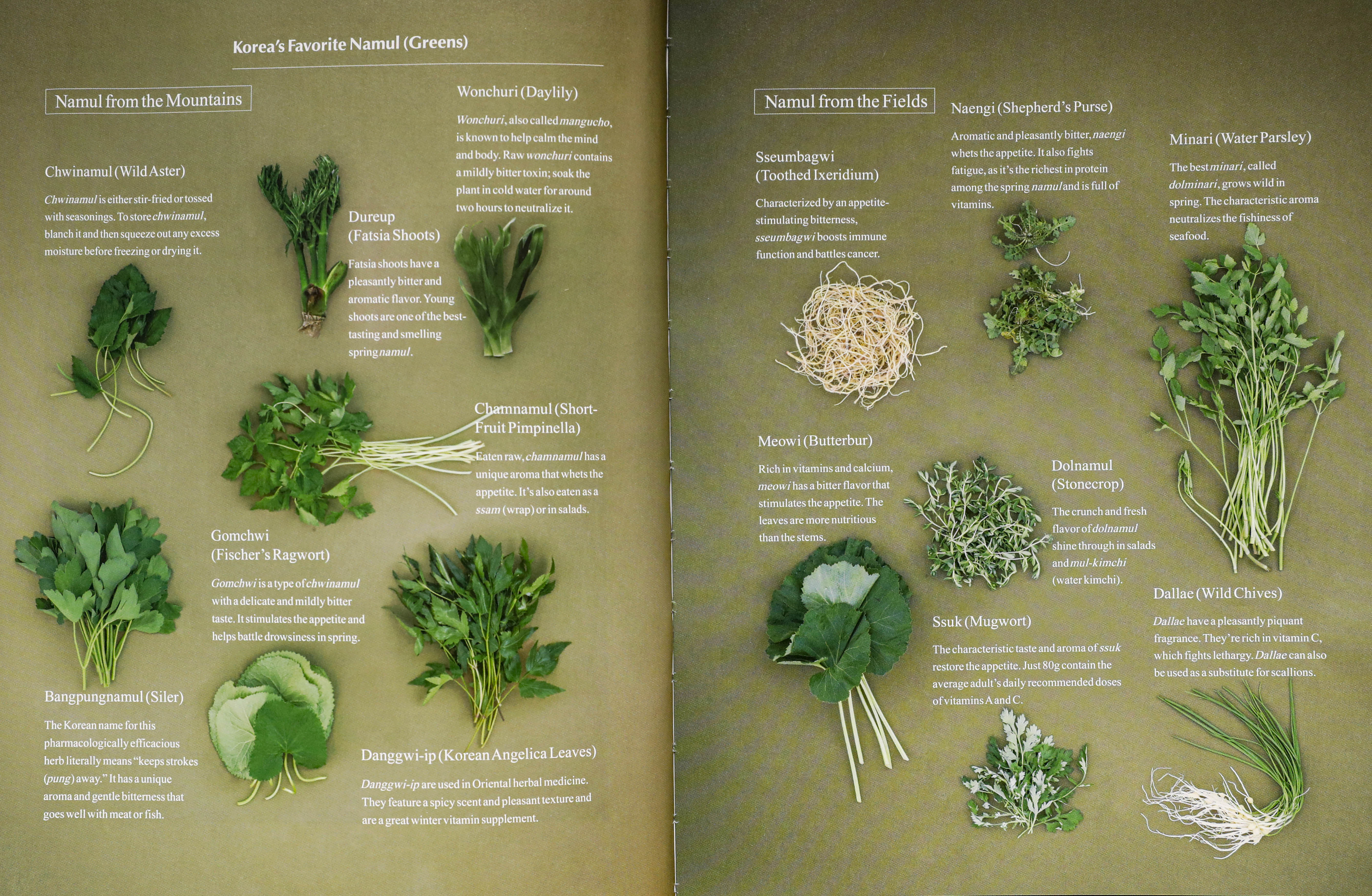[Feb] Rich in edible greens, Korea is a ‘namul nation’
Date Feb 20, 2022
 A scan from a page in "K FOOD: Secrets of Korean Flavors Part Four" dealing with namul, or Korean wild herbs
A scan from a page in "K FOOD: Secrets of Korean Flavors Part Four" dealing with namul, or Korean wild herbs
●Who can dispute the health benefits of Korean plants and wild herbs?
●A new book out gives an outline of what they are.
The Korean language has nearly 300 terms that include the word “namul.” Translated as “edible raw grasses or leaves,” this simple word with a complex meaning appears in or as a substitute for countless delicacies produced from namul. Namul can be found growing across Korea, from the highest mountain peak to the bottom of a pond, and even between the cracks in a sidewalk.
Korea could well be called a “namul nation,” and it often is in a series of books published last September with support from the Ottogi Ham Taiho Foundation – “K FOOD: Secrets of Korean Flavors.”
The series’ 224-page Volume Four – subtitled “Picking. Digging. Plucking” – is dedicated entirely to namul. It introduces the millennia-old history of namul, analyzes its distinct characteristics and thoroughly explains various types, including leafy vegetables, fungi, roots, fruit and seaweed.
Namul’s origins trace back to the time humanity consisted of hunter-gatherers, with the mountainous terrain that covers 70 percent of the Peninsula pushing ancient Koreans more toward the gatherer side of that pairing. Namul is baked into the culture, as seen in the many folk songs about foraging for greens. It’s even mentioned in the foundation myth of the first Korean kingdom, in which a bear is transformed into a woman named Ungnyeo by avoiding sunlight and eating only garlic and mugwort for 100 days.
Lastly the book gives detailed recipes for dozens of namul dishes, including the ever-popular soybean sprouts, pan-fried lotus root, deodeokgui (grilled bonnet bellflower roots) and miyeokguk (seaweed soup).
The contributors ably demonstrate their passion for namul, and all of their work is beautifully photographed.
“There's really no end to the diversity of Korean namul,” said Dustin Wessa, the American owner of Namsan Sool Club at the foot of Seoul’s Namsan Mountain. He has developed his skills as a forager to create unique culinary creations. “Foraging is in no way unique to the peninsula but I can think of no other modern cuisine that continues to set the table with hundreds of namul options, each carefully selected and prepared to accentuate their unique flavors, aromas and textures.”
Korea’s long tradition of namul adds infinite complexity to flavorful, healthy foods. At a typical Korean feast, people unfamiliar with the cuisine are astonished by the countless array of vegetable-based side dishes, each one made with ingredients from places one can only imagine. The “K FOOD” series reveals many of namul’s more curious secrets.
**If you have any questions about this article, feel free to contact us at kocis@korea.kr.**

The Ministry of Culture, Sports and Tourism's "Korea Here & Now" work can be used under the condition of "Public Nuri Type 1 (Source Indication)."




